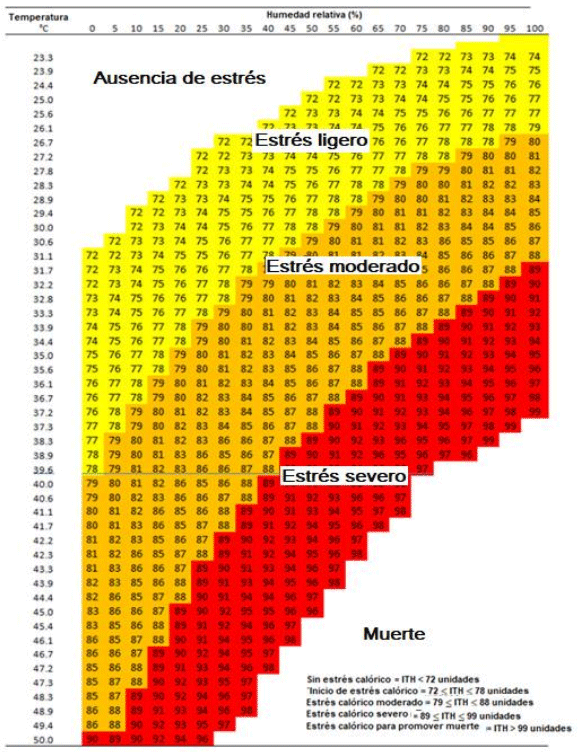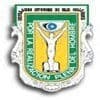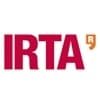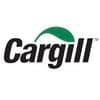Estrés por calor en ganado lechero con énfasis en la producción de leche y los hábitos de consumo de alimento y agua. Revisión
El impacto negativo del estrés por calor (EC) en la ganadería lechera repercute en cuantiosas pérdidas económicas a nivel mundial, dado que reduce la producción de leche, la eficiencia reproductiva y la vida productiva de las vacas. Adicionalmente, el mejoramiento genético continuo resulta en vacas muy productivas, pero menos tolerantes al EC debido a que producen mayor calor metabólico. Esto en conjunto con el calentamiento global convertirá al EC en un reto difícil de controlar para la industria lechera. Como respuesta dependiente del grado de EC, el ganado lechero realiza una serie de ajustes fisiológicos, metabólicos y conductuales como mecanismos de termorregulación para disipar el exceso de calor corporal y reducir la producción endógena del mismo, todo dirigido a mantener la normotermia. Sin embargo, la secreción láctea y la fertilidad se reducen por efecto directo de la hipertermia e indirectamente por la reducción en el consumo de nutrientes dietéticos. Los consumos de alimento y de agua están asociados estrechamente con la reducción de la productividad en ganado lechero expuesto a EC. Cabe mencionar que el impacto del EC en la productividad del ganado lechero varía entre razas, siendo las razas Bos taurus menos tolerantes al EC, particularmente la raza Holstein. Actualmente, se investiga en la identificación de genes asociados con la termotolerancia, los cuales son empleados en programas de selección por marcadores genéticos para producir vacas altas productoras de leche en climas cálidos. Por lo tanto, el objetivo de esta revisión es hacer un análisis comprensivo de los efectos del EC sobre la producción de leche, activación de mecanismos de termorregulación y conducta de ingesta en ganado lechero.
Palabras clave: Ganado Holstein, Termorregulación, Hipertermia, Cambio climático, Conducta de ingesta.
Introducción
Cambio climático y el futuro de la producción lechera
Termorregulación y producción de calor metabólico en ganado lechero
Termorregulación fisiológica del ganado lechero en estrés por calor

Estrés por calor y consumo de alimento
Estrés por calor y consumo de agua
Impacto del estrés por calor en la producción de leche
Respuestas adaptativas de razas lecheras al estrés por calor
Marcadores genéticos asociados con termotolerancia en ganado lechero
Conclusiones e implicaciones
1. Kadzere CT, Murphy MR. Silanikove N, Maltz E. Heat stress in lactating dairy cows: a review. Livest Prod Sci 2002;77:59-91.
2. Herbut P, Angrecka S, Walczak J. Environmental parameters to assessing of heat stress in dairy cattle—a review. Int J Biometeorol 2018;62(12):2089-2097.
3. Min L, Zhao S, Tian H, Zhou X, Zhang Y, Li S, et al. Metabolic responses and “omics” technologies for elucidating the effects of heat stress in dairy cows. Int J Biometeorol 2017;61(6):1149-1158.
4. Theusme C, Avendaño-Reyes L, Macías-Cruz U, Correa-Calderón U, García-Cueto RO, Mellado M, Vargas-Villamil L, et al. Climate change vulnerability of confined livestock systems predicted using bioclimatic indexes in an arid region of México. Sci Total Environ 2021;751:141779.
5. Bouraoui R, Lahmar M, Majdou A, Djemali M, Belyea R. The relationship of temperaturehumidity index with milk production of dairy cows in a mediterranean climate. Anim Res 2002;51:479-491.
6.Hernández-Rivera JA, Avendaño-Reyes L. Efecto de época del año (verano vs. invierno) en variables fisiológicas, producción de leche y capacidad antioxidante de vacas Holstein en una zona árida del noroeste de México. Arch Med Vet 2015;47(1):15-20.
7. Bohmanova J, Misztal I, Colef JB. Temperature-humidity indices as indicators of milk production losses due to heat stress. J Dairy Sci 2007;90:1947-1956.
8. Anzures-Olvera F, Macías-Cruz U, Álvarez-Valenzuela FD, Correa-Calderón A, DíazMolina R, West JW. Effects of heat-stress on production in dairy cattle. J Dairy Sci 2003;86:2131-2144.
9. Gorniak T, Meyer U, Südekum KH, Dänicke S. Impact of mild heat stress on dry matter intake, milk yield and milk composition in mid-lactation Holstein dairy cows in a temperate climate. Arch Anim Nutrit 2014;68:358-369.
10. Berman A. Are adaptations present to support dairy cattle productivity in warm climates? J Dairy Sci 2011;94:2147-2158.
11. Avendaño-Reyes L. Heat stress management for milk production in arid zones. In: Narongsak Chaiyabutr editor. Milk production - An up-to-date overview of animal nutrition, management and health. Intech Open, London UK; 2012:165-184.
12. Min L, Li D, Tong X, Nan X, Ding D, Xu B, et al. Nutritional strategies for alleviating the detrimental effects of heat stress in dairy cows: a review. Int J Biometeorol 2019;63:1283-1302.
13. Gantner V, Bobic T, Gantner R, Gregic M, Kuterovac K, Novakovic J, et al. Differences in response to heat stress due to production level and breed of dairy cows. Int J Biometeorol 2017;61:1675-1685.
14. Polsky L, von Keyserlingk MAG. Invited review: Effects of heat stress on dairy cattle welfare. J Dairy Sci 2017;100(11):8645-8657.
15. Pereira AM, Baccari F Jr, Titto EA, Almeida JA. Effect of thermal stress on physiological parameters, feed intake and plasma thyroid hormones concentration in Alentejana, Mertolenga, Frisian and Limousine cattle breeds. Int J Biometeorol 2008;52(3):199-208.
16. Smith DL, Smith T, Rude BJ, Ward SH. Short communication: comparison of the effects of heat stress on milk and component yields and somatic cell score in Holstein and Jersey cows. J Dairy Sci 2013;96(5):3028-33.
17. Santana ML, Bignardi AB, Pereira RJ, Stefani G, El Faro L. Genetics of heat tolerance for milk yield and quality in Holsteins. Animal 2017;11(1):4-14.
18. Avendaño-Reyes L, Correa-Calderón A, Macías-Cruz U, García-Casillas AC, Mellado M, Robinson PH, et al. Impacts on two dairy breeds of adding a third (night) cooling event under extreme ambient heat. Int J Biometeorol 2021;doi.org/10.1007/s00484-021- 02115-y.
19. Al-Ghussain L. Global warming: Review on driving forces and mitigation. Environ Prog Sustain Energy 2019;38(1):13-21.
20. Arnell NW, Lowe JA, Challinor AJ, Osborn TJ. Global and regional impacts of climate change at different levels of global temperature increase. Clim Change 2019;155:377- 391.
21. Hristov AN, Degaetano AT, Rotz CA, Hoberg E, Skinner RH, Felix T, et al. Climate change effects on livestock in the Northeast US and strategies for adaptation. Clim Change 2018;146:33-45.
22. St-Pierre NR, Cobanov B, Schnitkey G. Economic losses from heat stress by US livestock industries. J Dairy Sci 2003;86:E52-E77.
23. Fernández IG, Ulloa-Arvizu R, Fernández J. Milk yield did not decrease in large herds of high-producing Holstein cows in semi-arid climate of Mexico. Trop Anim Health Prod 2019;51(1):149-154.
24. FAO. World livestock 2011. Livestock in food security. A. McLeod (ed.). FAO. pp.115 Available at: http://www.fao.org/docrep/014/i2373e/i2373e00.htm
25. Bernabucci U, Lacetera N, Baumgard LH, Rhoads RP, Ronchi B, Nardone A. A metabolic and hormonal acclimation to heat stress in domesticated ruminants. Animal 2010;4:1167-1183.
26. Maia ASC, Da Silva RG, Battiston LCM. Sensible and latent heat loss from the body surface of Holstein cows in a tropical environment. Int J Biometeorol 2005; 50(1):17‐ 22.
27. Nardone A, Ronchi B, Lacetera N, Bernabucci U. Climatic effects on productive traits in livestock. Vet Res Commun 2006;30(suppl. 1):75-81.
28. Das R, Sailo L, Verma N, Bharti P, Saikia J, Imtiwati, Kumar R. Impact of heat stress on health and performance of dairy animals: A review. Vet World 2016 Mar;9(3):260-268.
29. Brouček J, Novák P, Vokřálová J, Šoch M, Kišac P, Uhrinčať M. Effect of high temperature on milk production of cows from freestall housing with natural ventilation. Slovak J Anim Sci 2009;42(4):167-173.
30. Gao ST, Ma L, Zhou Z, Zhou ZK, Baumgard H, Jiang D, et al. Heat stress negatively affects the transcriptome related to overall metabolism and milk protein synthesis in mammary tissue of midlactating dairy cows. Physiol Genomics; 2019;51:400-409.
31. Elayadeth‐Meethal M, Veettil AT, Maloney SK, Hawkins N, Misselbrook TH, Sejian V, et al. Size does matter: Parallel evolution of adaptive thermal tolerance and body size facilitates adaptation to climate change in domestic cattle. Ecol Evol 2018;8(21):10608- 10620.
32. Ohnstad I. Managing heat stress in dairy cows. National animal disease information service 2016; (©NADIS).
33. DiGiacomo K, Marret LC, Wales WJ, Hayes BJ, Dunshea FR, Leury BJ. Thermoregulatory differences in lactating dairy cattle classed as efficient or inefficient based on residual feed intake. Anim Prod Sci 2014;54:1877-1881.
34. Hahn GL. Dynamic responses of cattle to thermal heat loads. J Anim Sci 1999;77(Suppl 2): 10-20.
35. Armstrong DV. Heat stress interaction with shade and cooling. J Dairy Sci 1994;77: 2044-2050.
36. De Rensis F, Garcia-Ispierto I, Lopez-Gatius F. Seasonal heat stress: Clinical implications and hormone treatments for the fertility of dairy cows. Theriogenology 2015;84:659-666.
37. Carter BH, Friend TH, Sawyer JA, Garey SM, Alexander MB, Carter MJ, et al. Effect of feed-bunk sprinklers on attendance at unshaded feed bunks in drylot dairies. Prof Anim Sci 2011;27:127-132.
38. NRC. National Research Coucil. Effect of environment on nutrient requirements of domestic animals. In: Basal metabolism. Washington, DC, USA: National Academy Press; 1981.
39. Renaudeau D, Collin A, Yahav S, De Basilio V, Gourdine JL, Collier RJ. Adaptation to hot climate and strategies to alleviate heat stress in livestock production. Animal 2012; 6:707-728.
40. Burfeind O, Suthar VS, Heuwieser W. Effect of heat stress on body temperature in healthy early postpartum dairy cows. Theriogenology 2012;78:2031-2038.
41. Vizzotto EF, Fischer VA, Thaler NAS, Abreu MT, Stumpf D, Werncke FA, et al. Access to shade changes behavioral and physiological attributes of dairy cows during the hot season in the subtropics. Animal 2015;9:1559–1566.
42. Meyer U, Everinghoff M, Gädek D, Flachowsky G. Investigations on the water intake of lactating dairy cows. Livest Prod Sci 2004;90:117-121.
43. Spiers DE, Spain JN, Sampson JD, Rhoads RP. Use of physiological parameters to predict milk yield and feed intake in heat-stressed dairy cows. J Thermal Biol 2004;29:759-764.
44. Tao S, Dahl GE. Invited Review: Heat stress effects during late gestation on dry cows and their calves. J Dairy Sci 2013;96:4079-4093.
45. Holter JB, West JW, McGilliard MI, Pell AN. Predicting ad libitum dry matter intake and yields of jersey cows. J. Dairy Sci 1996;79:912-921.
46. Rottman LW, Ying Y, Zhou K, Bartell PA, Harvatine KJ. The effects of feeding rations that differ in neutral detergent fiber and starch concentration within a day on production, feeding, behavior total-tract digestibility, and plasma metabolites and hormones in dairy cows. J Dairy Sci 2015;98 4673-4684.
47. Yadav B, Singh G, Verma AK, Dutta N, Sejian V. Impact of heat stress on rumen function. Vet World 2013;6(12):992-996.
48. Hassan A, Roussel JD. Effect of protein concentration in the diet on blood composition and productivity of lactating Holstein cows under thermal stress. J Agric Sci 1975;85: 409-415.
49. NRC. Nutrient requirements of dairy cattle. 7th Rev. Ed. Nat Acad Sci 2001; Washington, DC, USA. 50. Khelil-Arfa H, Bodon A, Maxin G, Faverdin P. Prediction of water intake and excretion flows in Holstein dairy cows under thermoneutral conditions. Animal 2012;10:1662- 1676.
51. Burgos M, Senn M, Sutter F, Kreuzer M, Langhans W. Effect of water restriction on feeding and metabolism in dairy cows. Am J Physiol Regulatory Integrative Comp Physiol 2001;280(2):R418-R427.
52. Spek JW, Bannink A, Gort G, Hendriks WH, Dijkstra J. Effect of sodium chloride intake on urine volume, urinary urea excretion, and milk urea concentration in lactating dairy cattle. J Dairy Sci 2012;95:7288-7298.
53. Holter J, Urban W. Water partitioning and intake prediction in dry and lactating Holstein cows. J Dairy Sci 1992;75:1472-1479.
54. Ammer S, Lambertz C, von Soosten D, Zimmer K, Meyer U, Dänicke S, et al. Impact of diet composition and temperature-humidity index on water and dry matter intake of high-yielding dairy cows. J Anim Physiol Anim Nutr 2018;102(1):103-113.
55. Roussel AJ. Fluid therapy in mature cattle. Vet Clin North Am Food Anim Pract 1999;15: 545-557.
56. Pawar MM, Srivastaba AK, Chauhan HD, Damor SV. Nutritional strategies to alleviate heat stress in dairy animals – A Review. Int J Livest Res 2018;8(1):8-18.
57. Cook NB, Mentink RL, Bennet TB, Burgui K. The effect of heat stress and lameness on time budget of lactating dairy cows. J Dairy Sci 2007;90:1674-1682.
58. Beatty DT, Barnes A, Taylor E, Pethick D, McCarthy M, Maloney SK. Physiological responses of Bos taurus and Bos indicus cattle to prolonged, continuous heat and humidity. J Anim Sci 2006;84:972-985.
59. Ji B, Banhazi T, Perano K, Ghahramani A, Bowtell L, Wang C, et al. A review of measuring, assessing and mitigating heat stress in dairy cattle. Biosyst Eng 2020;199:4- 26.
60. Cardot V, Le Roux Y, Jurjanz S. Drinking behavior of lactating dairy cows and prediction of their water intake. J Dairy Sci 2008;91:2257-2264.
61. Dado RG, Allen MS. Intake limitations, feeding behavior, and rumen function of cows challenged with rumen fill from dietary fiber or inert bulk. J Dairy Sci 1995;78:118-133.
62. Brscic MF, Gottardo A, Mazzenga A, Cozzi G. Behavioral response to different climatic conditions of beef cattle in intensive rearing systems. Poljoprivreda 2007;13(1):1-5.
63. Jago JG, Roche JR, Kolver ES, Woolford MW. The drinking behavior of dairy cows in late lactation. Proc NZ Soc Anim Prod 2005;65:2209-2014.
64. Pinheiro MFLC, Teixeira DL, Weary DM, vonKeyserlingk MAG, Hötzel MJ. Designing better water troughs: dairy cows prefer and drink more from larger troughs. Appl Anim Behav Sci 2004;89:185-193.
65. Osborne VR, Hacker RR, McBride BW. Effects of heated drinking water on the production responses of lactating Holstein and Jersey cows. Can J Anim Sci 2002;82:267-273.
66. Lanham JK, Coppok CE, Milam KZ, LaBore JM, Nave DH. Effect of drinking water temperature on physiological responses of lactating Holstein cows in summer. J Dairy Sci 1986;69:1004-1012.
67. Wilks DL, Coppock CE, Lanham JK, Brooks KN, Baker CC, Bryson WL, et al. Responses of lactating Holstein cows to chilled drinking water in high ambient temperatures. J Dairy Sci 1990;73:1091-1099.
68. Berman A. Estimates of heat stress relief needs for Holstein dairy cows. J Anim Sci 2005;83:1377-1384.
69. Barash H, Silanikove N, Shamay A, Ezra E. Interrelationships among ambient temperature, day length, and milk yield in dairy cows under a Mediterranean climate. J Dairy Sci 2001;84(10):2314-2320.
70. Ravagnolo O, Miztal I. Genetic component of heat stress in dairy cattle, parameter estimation. J Dairy Sci 2000;83(9):2126-2130.
71. Tao S, Orellana Rivas RM, Marins TN, Chen YC, Gao J, Bernard JK. Impact of heat stress on lactational performance of dairy cows. Theriogenology 2020;150:437-444.
72. Bernabucci U, Lacetera N, Ronchi B, Nardone A. Effects of the hot season on milk protein fractions in Holstein cows. Anim Res 2002;51:25-33.
73. Calamari L, Mariani P. Effects of hot environment conditions on the main milk cheese making characteristics. Zoot Nutr Anim 1998;24:259-271.
74. Kumar S, Alex R, Gaur GK, Mukherjee SS, Mandal DK, Singh U, et al. Evolution of Frieswal cattle: A crossbred dairy animal of India. Indian J Anim Sci 2018;88(3):265- 275.
75. Alfonzo EPM, Barbosa da Silva MVG, dos Santos Daltro D, Tempel Stumpf M, Calderaro Dalcin V, Kolling G, et al. Relationship between physical attributes and heat stress in dairy cattle from different genetic groups. Int J Biometeorol 2016;60:245-253.
76. Ramírez-Rivera EJ, Rodríguez-Miranda J, Huerta-Mora IR, Cárdenas-Cágal A, JuárezBarrientos JM. Tropical milk production systems and milk quality: a review. Trop Anim Health Prod 2019;51(6):1295-1305.
77. Collier RJ, Collier JL, Rhoads RP, Baumgard LH. Invited review: genes involved in the bovine heat stress response. J Dairy Sci 2008;91(2):445-454.
78. Bhanuprakash V, Singh U, Sengar G, Sajjanar B, Bhusan B, Raja TV, et al. Differential effect of thermal stress on HSP70 expression, nitric oxide production and cell proliferation among native and crossbred dairy cattle. J Thermal Biol 2016;59:18-25.
79. Deb R, Sajjanar B, Singh U, Kumar S, Singh R, Sengar G, et al. Effect of heat stress on the expression profile of Hsp90 among Sahiwal (Bos indicus) and Friswal (Bos indicus x Bos taurus) breed of cattle: A comparative study. Gene 2014;536:435-440.
80. Bhanuprakash V, Singh U, Sengar GS, Raja TV, Sajjanar B, Alex R, et al. Comparative expression profile of NOD1/2 and certain acute inflammatory cytokines in thermalstressed cell culture model of native and crossbred cattle. Int J Biometeorol 2017;61:931–941.
81. Lacetera N, Bernabucci U, Scalia D, Basiricò L, Morera P, Nardone A. Heat stress elicits different responses in peripheral blood mononuclear cells from Brown Swiss and Holstein cows. J Dairy Sci 2006;89(12):4606-4612.
82. Sigdel A, Abdollahl-Arpanahl R, Aguilar I, Peñagaricano F. Whole genome mapping reveals novel genes and pathways involved in milk production under heat stress in US Holstein cows. Front Genet 2019;10:928.
83. Hernández-Cordero AI, Sánchez-Castro MA, Zamorano-Algandar R, Luna-Nevárez P, Rincón G, Medrano JF, et al. Genotypes within the prolactin and growth hormone insulin-like growth factor-I pathways associated with milk production in heat stressed Holstein cattle: Genotypes and milk yield in heat stressed Holstein cows. Genet Mol Res 2017;16(4):gmr16039821.
84. González ME, González VM, Montaño MF, Medina GE, Mahadevan P, Villa C, et al. Genome-wide association analysis of body conformation traits in Mexican Holstein cattle using a mix of sampled and imputed SNP genotypes. Genet Mol Res 2017;16(2):gmr16029597.
85. Dikmen S, Cole JB, Null DJ, Hansen PJ. Genome-wide association mapping for identification of quantitative trait loci for rectal temperature during heat stress in Holstein cattle. PLoS One 2013;8:e69202.
86. Macciotta NPP, Biffani S, Bernabucci U, Lacetera N, Vitali A, Ajmone-Marsan P, et al. Derivation and genome-wide association study of a principal component-based measure of heat tolerance in dairy cattle. J Dairy Sci 2013;100:4683-4697.
87. Liu Y, Li H, Zhou X, Wang G. A novel SNP of the ATP1A1 gene is associated with heat tolerance traits in dairy cows. Mol Biol Rep 2011;38:83-88.
88. Badri TM, Chen KL, Alsiddig MA, Li L, Cai Y, Wang GL. Genetic polymorphism in Hsp90AA1 gene is associated with the thermotolerance in Chinese Holstein cows. Cell Stress Chaperones 2018;23:639-651.
89. Dikmen S, Khan FA, Huson HJ, Sonstegard TS, Moss JI, Dahl GE, Hansen PJ. The SLICK hair locus derived from Senepol cattle confers thermotolerance to intensively managed lactating Holstein cows. J Dairy Sci 2014;97(9):5508-5520.
90.Verma N, Gupta ID, Verma A, Kumar R, Das R, Vineeth MR. Novel SNPs in HSPB8 gene and their association with heat tolerance traits in Sahiwal indigenous cattle. Trop Anim Health Prod 2016;48:175-180.











